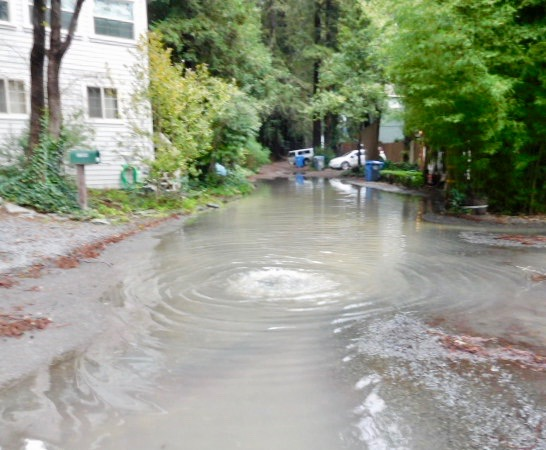
State and county officials have come up with a new cooperative plan to solve Russian River pollution problems caused by substandard septic systems, homeless camps and river recreational users.
“This is a big deal,” said Sonoma County Permit and Resource Management Dept. (PRMD) Director Tennis Wick when the Sonoma County Board of Supervisors approved the plan last month.
The new Memo of Understanding (MOU) calls for Sonoma County and the state North Coast Regional Water Quality Control Board (NCRWQCB) to share responsibility for fixing failing septic systems and reducing pollution from homeless camps and recreational users. Early estimates indicated 10,000 septic systems may need upgrades in the Russian River watershed and 5,000 might have to be replaced to bring properties into compliance with modern health and building codes.
Homes and businesses in Monte Rio, Healdsburg’s Fitch Mountain area and hundreds of other residences near the Russian River in Forestville, Summer Home Park and Hacienda will be affected by the coming regulations to bring older substandard septic systems into compliance.
The new MOU comes after state and county jurisdictions differed sharply last year over who would be responsible for enforcing state regulations intended to get the Russian River off a federal list of impaired water bodies polluted by high bacteria counts.
“It’s really great to have our relationship with the board’s staff move from fighters to friends,” said PRMD Director Wick.
“At the onset of this discussion it was very contentious,” said Fourth District County Supervisor James Gore. “We needed to get to this point.”
The new MOU reflects a continuing trend throughout the watershed “to move away from using the Russian River as a sewer,” said Gore.
The state NCRWQCB is scheduled to release a draft of a Total Maximum Daily Load (TMDL) action plan this year that will spell out the proposed next steps to reduce river pollution from septic systems, homeless camps, recreational users and other sources.
Under the MOU the water board, in cooperation with the county, will identify high priority areas and recommend minimum septic system requirements. The water board will then be in charge of gathering parcel-specific information on the septic systems and notifying property owners of necessary repairs or replacement. The county PRMD will be in charge of issuing building permits and monitoring compliance.
Finding and fixing old substandard septic systems has been identified as a centerpiece of the pollution problem but funding mechanisms have been elusive. The Dec. 13 approval of the new MOU acknowledges it may cost a bundle to bring some old river homes up to modern standards.
“Repair and replacement of septic systems will be expensive and especially difficult for owners of lower valued homes such as those in lower Russian River neighborhoods,” said the report from Sonoma County Community Development Commission (CDC) Executive Director Margaret Van Vliet.
State and county officials agree it could cost as much as $50,000 to replace a failing residential septic system.
The CDC and the state board will partner to obtain grants, loans or other funding to assist homeowners, says the report. Nearly $1 million in former Russian River Redevelopment Area property tax funds is also available for the TMDL action plan implementation along the Lower River.
“This is a big deal,” agreed former Fifth District Supervisor Efren Carrillo, who left office this month. “It’s a big step in the right direction,” said Carrillo. “The challenges, going from Fitch mountain to the Lower River are big,” said Carrillo who came into office eight years ago following a failed county effort to fund and build a Monte Rio sewage system plan that was projected to cost $20 million.
“There are strong divisions” within the lower river community,” regarding “the most appropriate step forward,” said Carrillo. “This MOU sets the stage in a very productive way for what the next years will involve” for solving lower river water quality issues, said Carrillo.
The Water Quality Control Board’s long-awaited Total Maximum Daily Load will establish limits on pollution sources including agricultural operations, malfunctioning or inadequate residential and commercial septic systems, homeless and migrant worker camps and even domestic pets.
The state and local septic system policy, established several years ago by state Assembly Bill 885, applies to the state’s estimated 1.2 million existing septic systems and to all new septic system installations. In Sonoma County there are now about 53,000 onsite septic systems, according to state figures.







